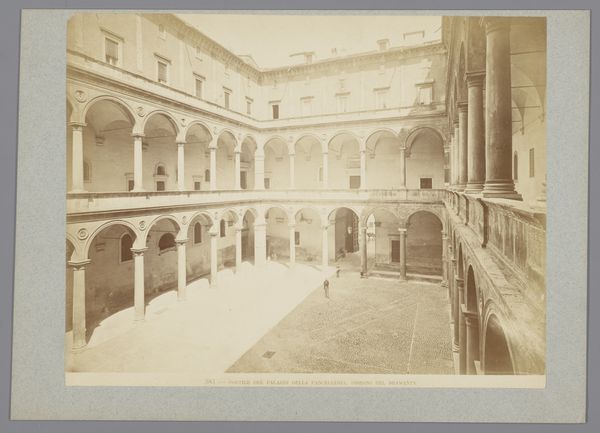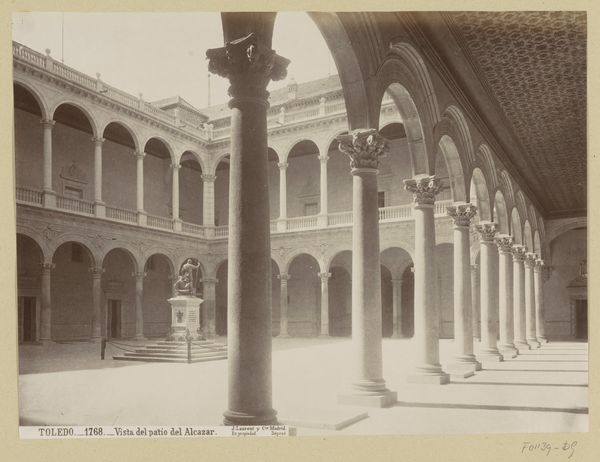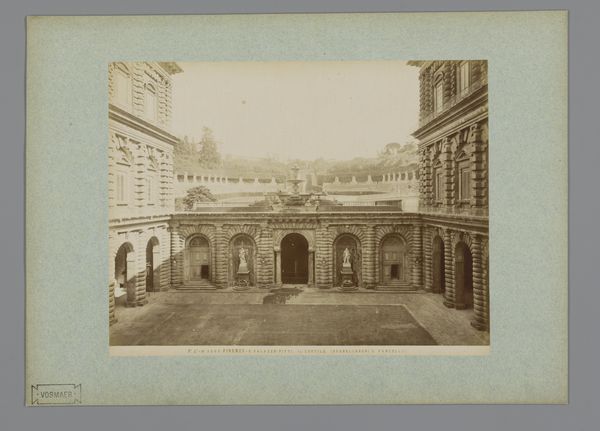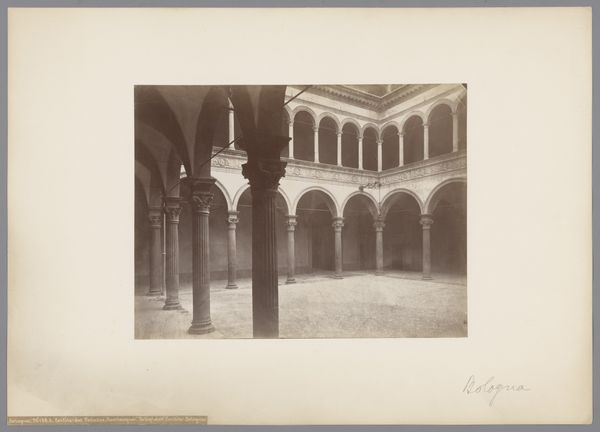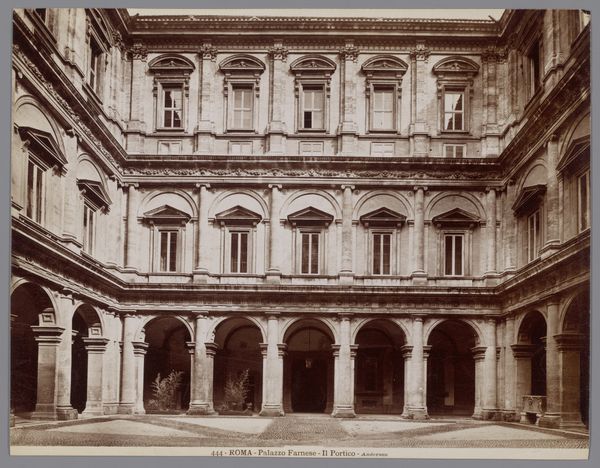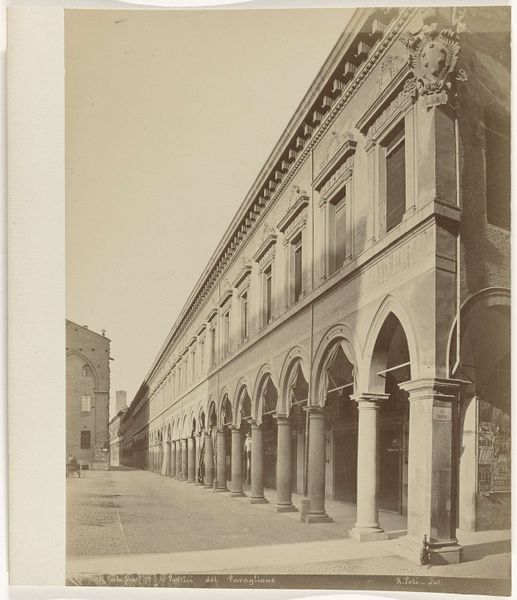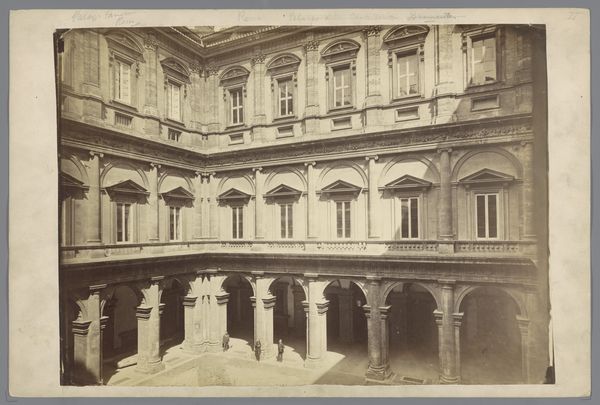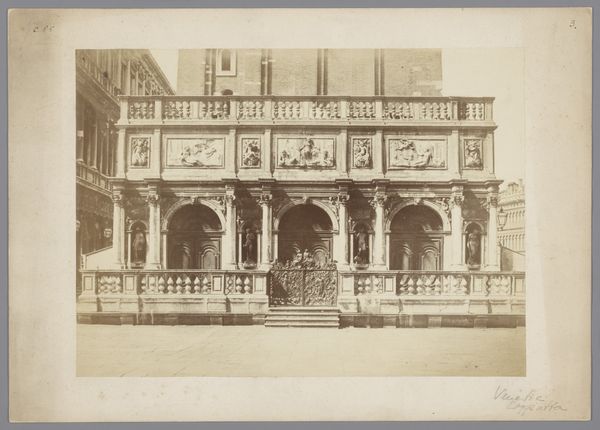
print, photography
# print
#
photography
#
19th century
#
cityscape
#
italian-renaissance
#
realism
Dimensions: height 268 mm, width 358 mm
Copyright: Rijks Museum: Open Domain
Editor: This is "Binnenplaats van het Ospedale Maggiore te Milaan" – or Courtyard of the Major Hospital in Milan – taken sometime between 1875 and 1900. It's a photograph and it gives me a distinct sense of Renaissance grandeur mixed with the austere practicality of a hospital. What strikes you most about this image? Curator: Well, its austere beauty immediately raises questions about the relationship between institutions and their public image. Look at this Ospedale. It clearly intends to convey power and permanence through its architecture. Who commissioned such a grand building? What message were they hoping to project about civic responsibility and care through such imposing visual design? Editor: That’s interesting! It's hard to reconcile the suffering typically associated with hospitals with such ornate surroundings. Was it typical for charitable institutions of the time to present themselves so…majestically? Curator: That’s a key question. How do socio-political and economic contexts dictate artistic choices? Think about the role of philanthropy and power. Who were the patrons behind these institutions? Their wealth shaped the cityscape, but also controlled narratives around charity and public health. This photograph presents a carefully constructed image for the world. What might it conceal about the realities inside? Editor: It's like a very deliberate act of branding, but instead of selling a product, they're selling an image of civic virtue and stability. I never thought about buildings in that way. Curator: Exactly. Consider the influence of institutions on artistic production – how patronage affects subject matter, style, and even the way the public perceives reality. That’s one reason I find it such a compelling image; it encourages me to examine not just what's visible, but also what’s left out. Editor: So, by understanding the history of the hospital, its patrons, and the politics of the time, we can begin to unravel the deeper meanings behind what appears at first glance to be just a picture of a building. Thanks, I get it.
Comments
No comments
Be the first to comment and join the conversation on the ultimate creative platform.
